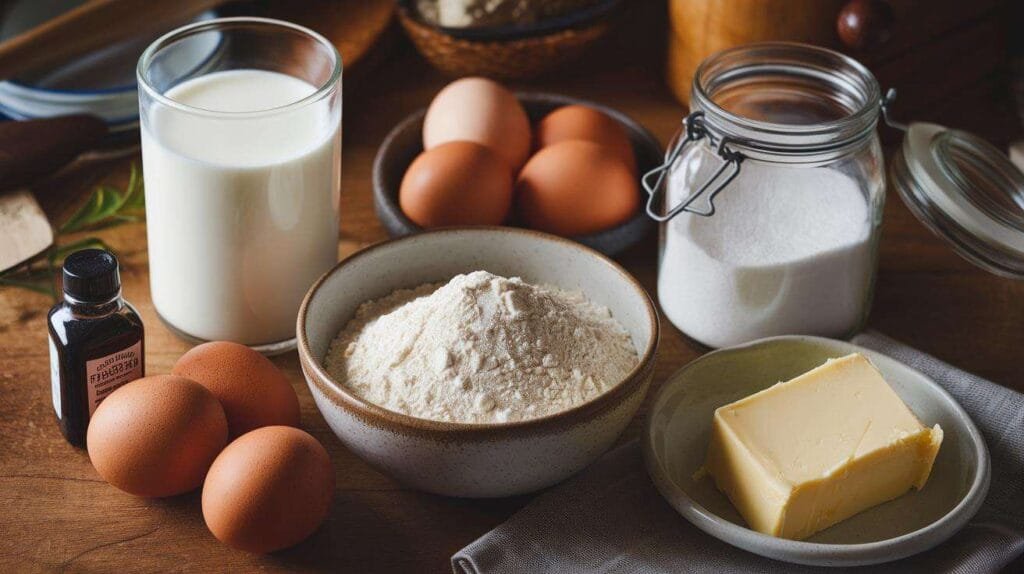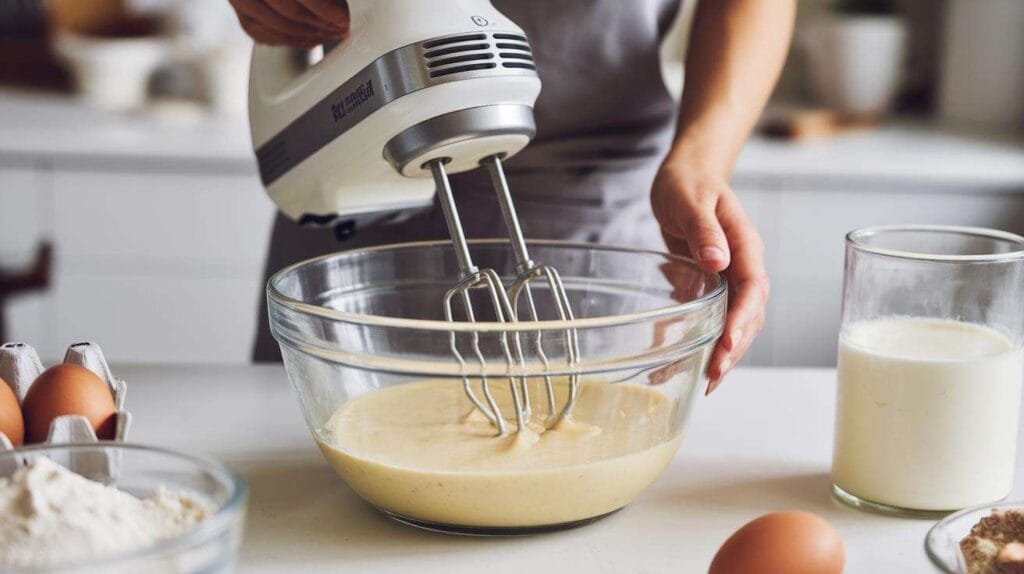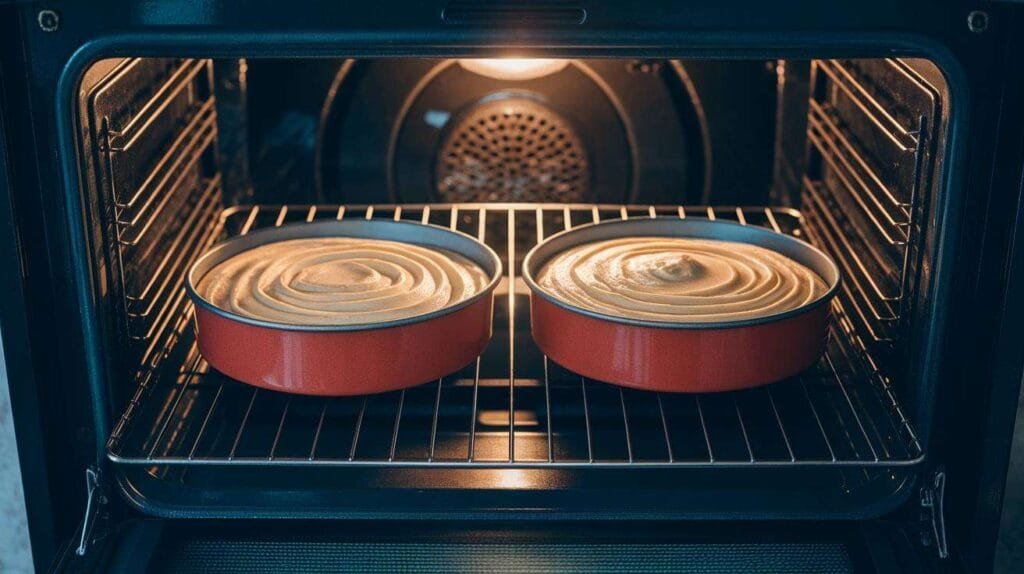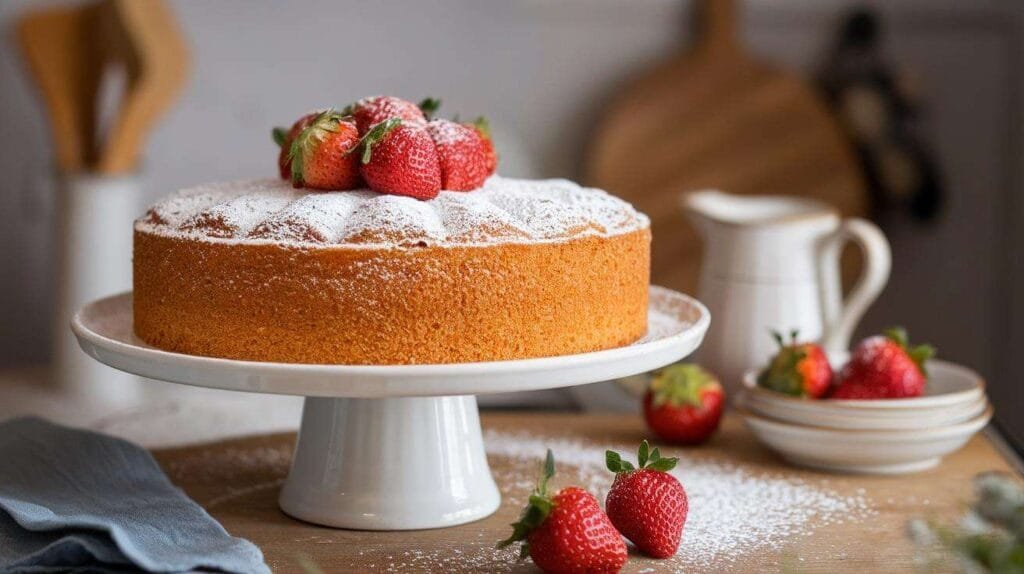Buttermilk cake is a classic recipe that has stood the test of time. Perfect for celebrations or cozy afternoons with tea, this cake combines a fluffy texture with a rich flavor profile. Whether you’re a seasoned baker or a newbie experimenting with your oven, this recipe is designed to be foolproof. Trust me, you’ll want this cake on repeat in your household.
Why Choose Buttermilk for Baking?
You might be thinking, “What’s the big deal about buttermilk anyway?” That’s a great question! Let’s dig into the magic that buttermilk adds to your baking.
The Science Behind Buttermilk in Cakes
Here’s the scoop: buttermilk is slightly acidic. When mixed with baking soda or baking powder, that acidity kicks off a chemical reaction, releasing carbon dioxide. The result? A beautifully risen, fluffy cake. It’s like a built-in air pump for your batter!
Additionally, buttermilk tenderizes the gluten in flour, giving your cake that soft and moist crumb. It’s like giving your cake a gentle hug from the inside.
Benefits of Using Buttermilk in Baking
- Enhanced Moisture: No one likes dry cake, right? Buttermilk locks in moisture, making every bite irresistibly soft.
- Balanced Sweetness: Its tangy flavor helps balance the sweetness of the cake, so it’s not overly sugary.
- Natural Flavor Enhancer: Think of buttermilk as a flavor amplifier—it makes vanilla and other ingredients pop.
Ingredients for a Perfect Buttermilk Cake
A great cake starts with great ingredients. For this buttermilk cake recipe, we’ll focus on simple, everyday items you probably already have in your pantry. Don’t worry; I’ll also share tips for substitutions.

Essential Ingredients Breakdown
- All-Purpose Flour: This is your base. For an extra light texture, sift the flour before measuring.
- Sugar: Granulated sugar works perfectly for that classic sweetness.
- Eggs: Room temperature eggs blend better into the batter, giving it a silky texture.
- Butter: Unsalted and softened—because who wants a salty surprise?
- Buttermilk: The star of the show! Use fresh buttermilk if possible for the best results.
- Vanilla Extract: Don’t skimp here! Pure vanilla extract adds depth to the cake’s flavor.
- Baking Soda and Powder: These leavening agents work with the buttermilk to create that fluffy rise.
Choosing the Right Buttermilk
Fresh buttermilk is ideal, but if you can’t find it, don’t worry—you can make a quick substitute. Just mix one cup of milk with a tablespoon of vinegar or lemon juice, let it sit for 5 minutes, and voila! Instant buttermilk.
Tips for Substituting Buttermilk
- Yogurt: Dilute plain yogurt with water to match the consistency of buttermilk.
- Sour Cream: Mix sour cream with a bit of milk for a similar effect.
- Milk and Cream of Tartar: Add 1 ½ teaspoons of cream of tartar to a cup of milk as another option.
Step-by-Step Buttermilk Cake Recipe
Are you ready to get baking? Roll up your sleeves, preheat that oven, and let’s make some cake magic happen.
Preparing the Batter

- Preheat Your Oven: Set it to 350°F (175°C). Grease and flour your cake pans or line them with parchment paper.
- Cream Butter and Sugar: Using a hand mixer or stand mixer, beat the butter and sugar until it’s light and fluffy. This step is crucial—it incorporates air into the batter.
- Add Eggs: One at a time, mix in the eggs, making sure each is fully incorporated before adding the next.
- Mix Dry Ingredients: In a separate bowl, whisk together the flour, baking powder, and baking soda.
- Alternate Wet and Dry: Slowly add the dry ingredients to the butter mixture, alternating with buttermilk. Begin and end with the dry ingredients to keep the batter smooth.
- Add Vanilla: Stir in that magical splash of vanilla extract for a fragrant finish.
Baking Instructions for a Fluffy Cake

- Divide the batter evenly between your prepared pans.
- Bake for 25-30 minutes, or until a toothpick inserted into the center comes out clean.
- Let the cakes cool in the pans for 10 minutes before transferring them to a wire rack to cool completely.
Tips for Perfect Texture and Flavor
- Don’t Overmix: Overmixing can develop the gluten too much, making your cake dense.
- Check the Oven Temperature: Use an oven thermometer to ensure accuracy—an off temperature can ruin your cake.
- Let It Cool Completely: Frosting a warm cake is a recipe for disaster. Patience is key!
Variations of Buttermilk Cake Recipes
One of the most exciting things about baking is how versatile recipes can be. A simple base like this buttermilk cake recipe opens up a world of creative possibilities. If you’re looking for hearty meal inspirations alongside your desserts, you might enjoy exploring these Blackstone dinner ideas to complement your buttermilk creations. From chocolate lovers to fans of pound cakes, there’s something for everyone.
Buttermilk Chocolate Cake Delight
Chocolate and buttermilk—now that’s a match made in dessert heaven! Adding cocoa powder to the batter gives your cake a rich, chocolatey twist. Buttermilk enhances the chocolate flavor while ensuring the cake stays moist.
- How to Make It: Replace ½ cup of flour with cocoa powder and add a handful of chocolate chips to the batter for a decadent experience.
- Best Topping: Frost with a smooth chocolate ganache or a whipped cream topping for an extra treat.
Classic Vanilla Cake Using Buttermilk
A classic vanilla cake never goes out of style, especially when made with buttermilk. Its simplicity and elegance make it the go-to cake for birthdays, weddings, and everything in between.
- Pro Tip: Double up on the vanilla extract for a more pronounced flavor. You could also use vanilla bean paste for a sophisticated touch.
- Decoration Ideas: Fresh berries and a dusting of powdered sugar work wonders for presentation.
Buttermilk Pound Cake: A Timeless Treat
If you’re craving something denser yet equally moist, try a buttermilk pound cake. This variation is buttery, tender, and perfect with a cup of coffee or tea.
- How to Make It: Increase the butter and eggs in the recipe for a rich and dense texture. Bake it in a loaf pan or a bundt pan for that classic pound cake shape.
- Serving Suggestions: Serve slices with a dollop of whipped cream or a drizzle of homemade caramel sauce.
Common Challenges and Solutions When Baking Buttermilk Cake
Let’s face it—baking isn’t always smooth sailing. Even with the best recipe, things can go wrong. But don’t worry! I’ve got you covered with some common challenges and their simple fixes.
Preventing Dryness in Buttermilk Cake
- The Problem: Your cake turns out dry despite using buttermilk.
- The Solution: Measure your flour correctly! Too much flour is often the culprit. Use a spoon to fill your measuring cup and level it off with a knife. Also, avoid overbaking—check your cake a few minutes before the timer ends.
How to Achieve the Perfect Rise
- The Problem: Your cake is dense or doesn’t rise evenly.
- The Solution: Make sure your leavening agents (baking soda and baking powder) are fresh. They lose their potency over time, so it’s worth replacing them if they’ve been sitting in your pantry for a while.
Fixing Uneven Texture
- The Problem: Your cake has lumps or an inconsistent texture.
- The Solution: Always sift your dry ingredients to break up any clumps and aerate the flour. Additionally, don’t rush through the mixing process—take your time to ensure everything is well combined.
Delicious Desserts with Buttermilk
Buttermilk isn’t just for cakes—it’s the unsung hero of many desserts. Its tangy flavor and moisture-locking properties make it a favorite among bakers. If you’re in the mood for something more indulgent, take a peek at these best dessert recipes for inspiration. From pies to puddings, the possibilities are endless when you let buttermilk work its magic.
Buttermilk Cake Pairings and Toppings
Pairing the right toppings with your cake can elevate it to gourmet status. Some crowd-pleasers include:
- Cream Cheese Frosting: The tanginess of cream cheese complements the sweetness of the cake beautifully.
- Fresh Fruit: Strawberries, blueberries, or even peaches add a refreshing touch.
- Nuts and Caramel: A sprinkle of chopped pecans with a drizzle of caramel sauce creates a delightful crunch.
Other Desserts Featuring Buttermilk
- Buttermilk Biscuits: Light and fluffy, they’re perfect with a dollop of jam or honey.
- Buttermilk Pie: A southern classic with a custard-like filling that’s irresistible.
- Buttermilk Pancakes: Start your day on a sweet note with these fluffy delights.
Storing and Serving Buttermilk Cake

Once your masterpiece is baked, you’ll want to store and serve it properly to keep it fresh and flavorful.
Best Practices for Storing Your Cake
- Room Temperature: If you plan to eat the cake within two days, keep it at room temperature in an airtight container.
- Refrigeration: For longer storage, wrap the cake tightly in plastic wrap and refrigerate it. This helps retain its moisture.
- Freezing: Yes, you can freeze it! Wrap individual slices in plastic wrap, then foil, and store them in a freezer bag for up to three months. Thaw at room temperature before serving.
How to Serve for Maximum Flavor
- Serve slices slightly warm with a scoop of vanilla ice cream for a comforting dessert. If you’re planning a cozy evening meal, pair this with a comforting soup like Shepherd’s Pie Soup for a wholesome and satisfying combination.
- For a sophisticated touch, dust each slice with powdered sugar and garnish with a sprig of mint.
- Don’t forget coffee or tea—this cake pairs beautifully with a warm beverage.
FAQs
How to make buttermilk for cake?
Making buttermilk at home is a quick and simple process, especially when you’re in the middle of baking and realize you don’t have any on hand. Buttermilk adds a tangy flavor and moisture to baked goods, making it a key ingredient for cakes, pancakes, and other recipes. Fortunately, you can create a buttermilk substitute with ingredients you likely already have in your kitchen.
To make buttermilk, you need just two ingredients: milk and an acidic agent such as lemon juice or white vinegar. Start by measuring one cup of milk, preferably whole milk or 2% for the best results. Add one tablespoon of lemon juice or white vinegar to the milk. Stir the mixture well to ensure the acid is evenly distributed. Then, let the mixture sit for about 5-10 minutes at room temperature.
During this resting period, the milk will begin to curdle slightly. This is a normal reaction between the acid and milk, forming a texture and taste similar to buttermilk. Once it thickens slightly, your homemade buttermilk is ready to use in your cake recipe. This substitute works perfectly in most recipes and ensures your baked goods turn out just as moist and flavorful as if you’d used store-bought buttermilk.
What does buttermilk do in a cake?
Buttermilk plays a vital role in cake baking, contributing to both the texture and flavor of the final product. Its slightly tangy taste enhances the overall flavor profile, giving the cake a subtle richness and depth that plain milk can’t achieve. Buttermilk’s acidity is one of its most important features, as it reacts with leavening agents like baking soda or baking powder, producing carbon dioxide. This reaction helps the cake rise, resulting in a light and fluffy texture.
Moreover, buttermilk helps break down gluten in the flour, which softens the cake and gives it a tender crumb. This is particularly important for creating cakes that are moist and not overly dense. Additionally, the acidity in buttermilk enhances the structure of the cake, allowing it to hold together well without being too heavy.
Buttermilk also contributes to the cake’s moisture, preventing it from drying out during baking. Whether you’re making a classic vanilla sponge, a chocolate cake, or a rich red velvet, buttermilk ensures your cake has the perfect balance of flavor, texture, and softness. It’s a small ingredient with a big impact, making it a baker’s favorite secret weapon.
What does buttermilk do to a cake?
Buttermilk has a transformative effect on cakes, enhancing both their texture and flavor. Its acidity reacts with leavening agents like baking soda or baking powder, creating carbon dioxide bubbles that help the cake rise. This reaction results in a cake that is light, fluffy, and well-aerated.
The tangy flavor of buttermilk adds depth and richness to the cake, complementing the sweetness of other ingredients. It also tenderizes the gluten in the flour, leading to a softer, more delicate crumb. Additionally, buttermilk helps retain moisture in the cake, preventing it from drying out and ensuring a luscious, moist texture.
In essence, buttermilk is a multitasking ingredient that improves the structure, taste, and overall quality of a cake, making it a go-to choice for bakers seeking a perfect bake.
What to substitute for buttermilk in cake?
If you don’t have buttermilk on hand, there are several simple substitutes you can use in your cake recipe. Each option mimics the acidity and consistency of buttermilk, ensuring your cake turns out moist, tender, and flavorful. Here are a few popular alternatives:
- Milk and Lemon Juice or Vinegar: Combine 1 cup of milk (whole or 2% works best) with 1 tablespoon of lemon juice or white vinegar. Stir and let it sit for 5-10 minutes until it thickens slightly.
- Milk and Cream of Tartar: Mix 1 cup of milk with 1 ¾ teaspoons of cream of tartar. Whisk well to dissolve the powder.
- Plain Yogurt: Use plain yogurt as a one-to-one substitute for buttermilk. Thin it with a little milk if it’s too thick to match buttermilk’s consistency.
- Sour Cream: Like yogurt, sour cream can replace buttermilk in equal amounts. You may need to dilute it slightly with milk for a smoother texture.
- Milk and Sour Lemonade Powder: Stir 1 cup of milk with 1 teaspoon of unsweetened lemonade powder to create a tangy buttermilk alternative.
Each of these substitutes will replicate the acidity and richness of buttermilk, ensuring your cake bakes up beautifully.
Conclusion:
There’s no denying that a buttermilk cake recipe is a must-have in every baker’s arsenal. Its moist texture, fluffy crumb, and perfectly balanced flavor make it a showstopper for any occasion. Whether you’re baking it for a birthday party, a holiday dinner, or just a cozy evening at home, this cake never fails to impress.
The versatility of this recipe is what makes it so special. From the classic vanilla version to indulgent variations like buttermilk chocolate cake or the timeless buttermilk pound cake, there’s no end to the delicious possibilities. The secret ingredient—humble buttermilk—does so much more than keep your cake moist; it adds depth, character, and a touch of tang that elevates your dessert to new heights.

